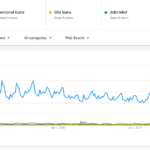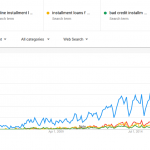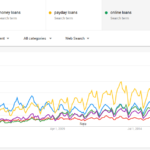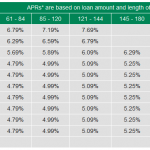Auto Loan Origination Statistics
Auto Loan Origination Facts, 2020 Trends and 2019-2018 Statistics
Loans, as you already know, are amounts of money or other assets that are provided to borrowers in exchange for a promise to pay back those sssets in the future. In almost all cases, the amount of money paid back to lenders by borrowers is greater than the dollar amount that was lent to the borrower in the first place, which serves as the incentive behind why lenders provide loans to borrowers.
Loans, like all things, have to come from somewhere. The process of obtaining a loan – to be correct, all of the individual processes that take place – is known as loan origination in the world of financial services and lending.
1. What All Does Loan Origination Consist Of?
The main stages in the process are as follows:
- First, the prospective borrower who is seeking out a loan has to apply for the loan.
- Then, the borrower has to provide the financial institution at hand with several types of financial and occupational documents to make sure that what applicants say is actually true.
- The lender now assesses the entirety of the application and determines whether a loan should be extended to the people who apply for loans.
- Ultimately, if the borrower is approved, a loan is extended to the borrower. In most cases, the borrower will then accept the loan and sign all necessary documentation.
2. The Number Of Auto Loan Originations Isn’t Trending In Any Direction
In 2018, according to LendingTree, there were about 27 million auto loan originations throughout the United States. This number was just 183,000 greater than the previous year. In 2016, there were about 540,000 fewer originations as compared to 2018.
This makes it clear that there are no trends in terms of auto loan originations across the United States. As such, the market can trend upward or downward at any time. The best way to look out for what could happen in terms of the number of auto loan originations in the country is to turn to other metrics that you can rely on, such as those related to consumer economic confidence, interest rates, and willingness of auto manufacturers to lend out their vehicles with favorable conditions.
3. These Credit Scores Are Seeing More – Or Less – Auto Loan Originations
In 2009, just 11 percent of all car loan originations in the United States came from people with credit scores ranging between 620 and 659. In 2017, this percentage rose a full 100 basis points up to 12 percent. The share of consumers with these credit scores who received auto loan origination approval hit a 10-year peak of 14 percent in 2013.
The share of consumers with FICO scores between 720 and 759 who originated auto loans dropped from 16 percent of the total domestic car loan origination market in 2009 to a decade-long low of 14 percent in 2015, but it’s since rose to 15 percent.
Since the economy is good, it’s likely that more originations will come from people who have poorer FICO scores relative to industry trends.
4. Here’s Where Most Prime And Subprime Originations Come From
Only 14 percent of credit unions’ and local banks’ 2018 auto loan originations were given out to subprime borrowers. Compare this to half of all originations made by auto financing companies.
This is because auto financing companies are so large that they are able to welcome interest from people who aren’t as likely to make good on loans. These companies are likely to remain widely used in the industry for years to come.
5. New And Used Auto Loan Originations
From the fourth quarter of 2017 to 2018’s fourth quarter, the auto financing market’s percentage of auto loan originations used to purchase used vehicles rose from 52.61 percent to 53.56 percent between the two periods.
Used cars are getting more reliable and consumers are starting to get smarter, which both explain why auto loan origination is increasingly linked to used vehicles.
6. Here’s The State With The Greatest Increase Of Auto Loan Originations
Louisiana saw an increase in the number of auto loan originations offered by lenders within its borders to borrowers from 2017 to 2018 to the tune of 18 percent, the greatest increase across all of the United States.
South Carolina, Hawaii, and Kansas came next on the list with positive changes of 17, 16, and 16 percent, respectively.
These four markets’ originations are likely to not increase by as much of a factor in the coming 12 months, though at least they’ve experienced good state-wide auto loan industry improvements in the past year.
7. Delinquency Is A Real Concern
The Federal Reserve Bank of New York recently pumped out data that indicated that the number of American consumers who are late on auto loan payments is higher than it’s been in 19 years – such data has only been recorded for 19 years, making the current mark an all-time high.
This metric has risen consistently in terms of year-on-year growth for every year since 2011. As such, it was predicted by many market experts, who believe that the number of Americans who are delinquent on auto loan payments will decrease next year.
8. Why Did Auto Loan Origination Grow So Quickly In The Fourth Quarter of 2017?
The United States’ Federal Reserve Bank of New York makes a second showing on this list, as its data indicated that the greatest increase in a single quarter in terms of dollar amount of auto loan originations came in the fourth quarter of 2017, with an increase of $137 billion.
Good employment market performance and cheap credit offers across the market had a lot to do with the record-setting increase. These two factors are likely to make one of the last two quarters of 2019 do nearly as well as 2017’s fourth quarter.









